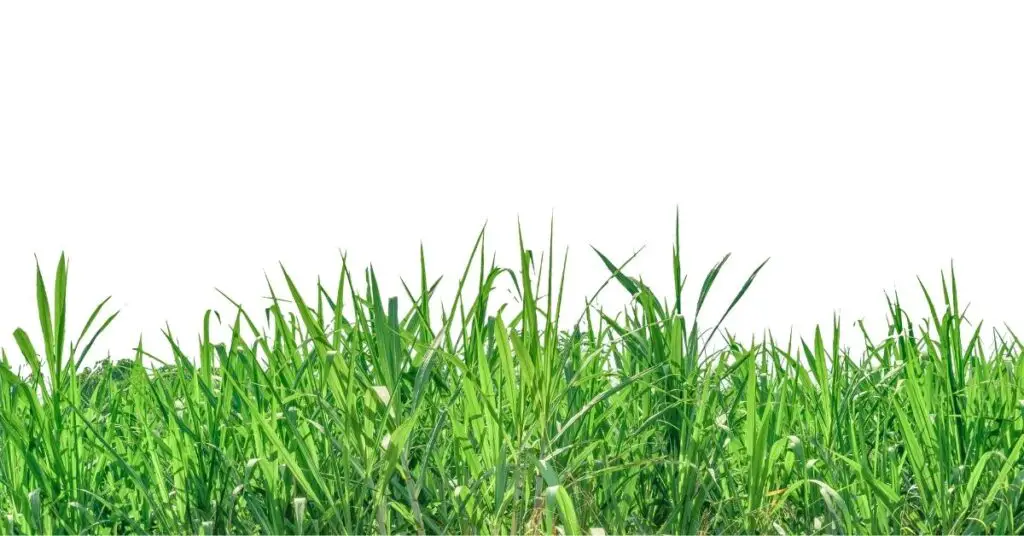Yes, grass creates oxygen through photosynthesis, converting sunlight, water, and CO2 into energy and oxygen.
Does Grass Create Oxygen?
Yes, grass does create oxygen! Just like other plants, it uses photosynthesis to turn sunlight, water, and carbon dioxide into energy – and a very valuable byproduct, oxygen. But before you give your lawn a round of applause for keeping you breathing, let’s dive a little deeper.
How Grass Makes Oxygen
Picture your lawn as a miniature oxygen factory. Here’s how it goes down:
- The Sun: Grass is a solar-powered machine! It all starts with those bright sunbeams hitting the leaves.
- Tiny Helpers: Inside each blade of grass are teeny things called chloroplasts. They’re packed with chlorophyll, which gives grass its beautiful green color.
- A Magical Process: This is where the real magic of photosynthesis happens. Chlorophyll absorbs sunlight, and the grass splits water (H2O) into hydrogen and oxygen.
- The Grand Release: The grass uses the hydrogen to make food for itself and happily releases the oxygen into the air for us to breathe.
How Much Oxygen Does Grass Really Produce?
You might be surprised! Here’s the scoop:
- A healthy 50-square-foot lawn produces enough oxygen to meet the daily needs of a family of four. Now that deserves a high-five!
- Our grassy friends work harder than we might think. Grass areas release more oxygen into the air than an equal-sized area of trees does.
Grass Is More Than Just Pretty
Turns out, besides giving us a soft place to play outside and making our neighborhoods look good, grass also:
- Cleans the Air: Grass is a pollution warrior! It traps dust, smoke, and other pollutants, giving our lungs a break.
- Cools Things Down: Grassy areas are naturally cooler than pavement or bare dirt, which helps combat those hot summer days.
- Prevents Erosion: Grass roots hold soil together, helping to prevent erosion and protect our waterways.
Table 1: Grass vs. Other Oxygen Producers
| Plant Type | Approximate Oxygen Production |
| 50-square-foot lawn | Enough for a family of four |
| Single mature tree | Enough for one to two people |
| Phytoplankton (ocean algae) | Produces up to 70% of the Earth’s oxygen |
Let’s Talk Lawn Care
Want your little oxygen factory to work at its best? Here are some tips:
- Water Wisely: Deep and infrequent watering is better for healthy roots and strong grass. Early mornings are best, so the grass blades dry and help avoid disease.
- Choose Your Fertilizer Carefully: Balanced fertilizers help lawns thrive without harming the environment.
- Mow High: Leaving your grass a bit taller (about 3 inches) helps it grow thicker and crowd out weeds.
Table 2: The Grass Gets Greener
| Pro of a Healthy Lawn | Why It Matters |
| Produces more oxygen | Better air quality for all |
| Absorbs pollution and dust | Cleaner environment, healthier neighborhoods |
| Helps prevent soil erosion | Protects water quality, reduces flooding risks |
Other Grassy Benefits
Believe it or not, grass does way more than just provide oxygen. Turns out, those little blades have some hidden superpowers:
- Noise Pollution Fighter: Grass acts as a natural sound barrier, helping to reduce noise in neighborhoods and along busy roads. Ah, the sound of (less) traffic!
- Stress Buster: Studies show that green spaces reduce stress and boost mental wellbeing. A grassy yard might just be nature’s chill pill.
- Community Builder: Parks and lawns bring people together. From picnics to playing sports, green spaces create a sense of community and shared enjoyment.
Grass: Not All Created Equal
Not all grasses are the same when it comes to oxygen production and overall environmental benefits. Here’s the lowdown:
- Cool-Season Grasses: These thrive in cooler climates and include varieties like Kentucky bluegrass and fescues. Think of the lush green lawns up north.
- Warm-Season Grasses: These love the heat and include varieties like Bermuda grass and Zoysia grass. They’re perfect for those blazing southern summers.
Choosing the Right Grass
The best grass for your yard depends on several factors:
- Climate: Pick a grass type suited to your local climate and temperatures.
- Sunlight: Does your yard get full sun, partial shade, or lots of shade? Choose a variety that matches your light conditions.
- Maintenance: How much time and effort do you want to put into lawn care? Some grasses require more maintenance than others.
Table 3: Know Your Grass
| Grass Type | Best For… | Notes |
| Kentucky Bluegrass | Cooler climates, full sun | Beautiful, lush appearance. Spreads by rhizomes to fill bare patches. Needs regular watering and fertilizer. |
| Tall Fescue | Cooler climates, sun or shade | Low-maintenance and drought-tolerant. Stays green year-round. |
| Bermuda Grass | Warmer climates, full sun | Forms a dense, durable lawn. Fast-growing and repairs itself quickly. Tolerates heat well. |
| Zoysia Grass | Warmer climates, full sun | Soft to walk on and tolerates foot traffic. Slow-growing but very low maintenance. |
Grass: The Green Hero
Grass might seem like just something we mow, but these humble plants pack some serious environmental perks:
- Carbon Capture: Like all plants, grass “inhales” carbon dioxide from the air and stores it as carbon. This helps to offset greenhouse gas emissions.
- Habitat Provider: A healthy lawn is a world of life! It provides food and shelter for a variety of insects, birds, and other creatures.
- Protecting Water Quality: Grass roots filter rainwater, removing pollutants before it reaches our streams and rivers.
Conclusion- Does Grass Create Oxygen?
Grass is more than meets the eye. So, does grass create oxygen? Absolutely! Besides keeping us breathing, it helps keep our planet healthy in so many ways. The next time you see a bright green lawn, remember those hardworking little blades of grass and their awesome oxygen-making power.

